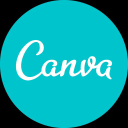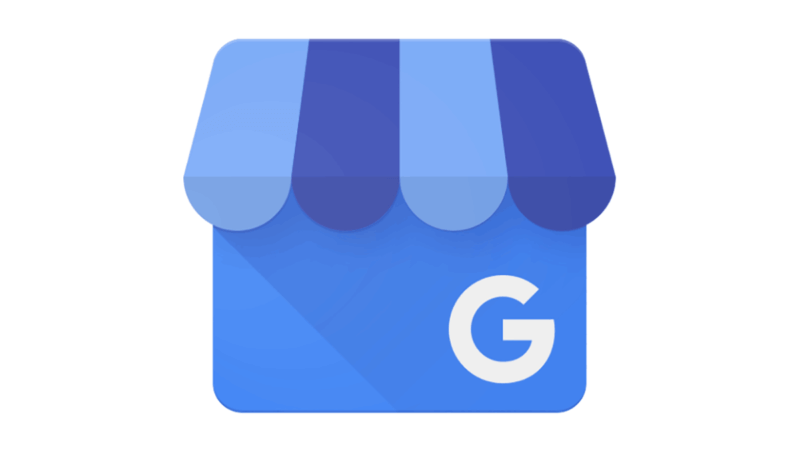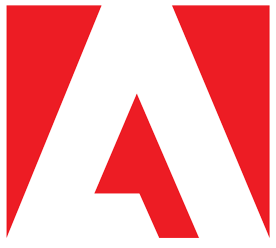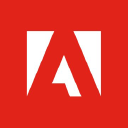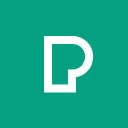We Turned A Basic HP Printer Into A $12M/Year Custom Labels Company
Hello! Who are you and what business did you start?
I’m Dan Frist and I own Frontier Label. Frontier Label is a full e-commerce digital label printing company in Greenville, SC. We print labels for companies of all sizes in countless industries.
Our customers are folks who craft small-batch artisan candles out of their homes to large, private label cosmetics companies distributing thousands of products monthly. Our customers are our neighbors who sell their products at farmers’ markets, and they’re also operating large corporations with multiple locations around the nation. We provide business solutions for anyone who needs product labels.
We now make $12M annually, averaging roughly $850k a month. Earlier this year, we also moved into a much larger facility to accommodate for our robust growth and to make way for our future goals. Adding embellishments and custom folding cartons to our capabilities are also on the horizon.


What's your backstory and how did you come up with the idea?
As for me, I’m nobody, really. I don’t have a pedigree, I don’t come from a line of business titans. I am one of nine children with a father who ran his own small business for years, but that business never grew larger than ten employees.
Everything started in New Jersey on March 9th, 1981. My father, Hans Frist, incorporated a company called Anker Labelers. Anker began with the purpose to manufacture a pail labeling machine for the paint industry.
In 1987, we moved from New Jersey to South Carolina and also changed the name to Pioneer Packaging Machinery Inc. Between the years of 1991 and 1994, my dad began apprenticing his three eldest sons in the business, myself included. I started working as a mechanical engineer at 13 years of age.
In October of 2001, my dad received a diagnosis of terminal head and neck cancer. He continued to work in his current position as President of the company focusing mainly on sales but eventually stepped down as President of the company to focus on his battle with cancer. On February 10th, 2004 my dad passed away.
You have to stare failure in the face to figure out what’s necessary to succeed, and whether or not you’re willing to put the work in.
In July of 2004, we purchased an HP Indigo WS 2000 Digital Press along with an AB Graphic Digicon digital label finishing machine. Why labels? My father’s company was a labeling machine manufacturer. The idea was to begin selling self-adhesive labels along with the labeling machines that used them. We wanted to move from one-time sales of machinery to an actual consumable with customers buying more frequently.
Digital label printing was a very new technology and had only been around for a few years. Most of the label industry did not view digital label printing as an industrial solution, and therefore most companies were not interested in pursuing this option or market. In a way, digital label printing was, and still is, a very disruptive technology, and we wanted to be a part of it.
Take us through the process of designing, prototyping, and manufacturing your first product.
Our first printer was the HP Indigo WS 2000 and it was very simple. It was basically a standard desktop HP printer, just on a larger scale. It was a very cheap machine as we were still early on in digital technology. It was very limited in what it could do compared to the other contemporary label printing machines. Flexo and offset printers were thriving and dominating the industry. No one thought it was possible to build a business on a basic digital HP printer.
There was no prototyping/building of the printer nor the labels themselves. Customers design their own labels and we print. Since the Frists had experience in the machinery industry, switching to digital print was very simple. The main issue was marketing the business.
We were constantly encouraged by people in the company to buy a flexographic printer because that’s what “everyone else was doing.” My brothers and I were resolute. No, we weren’t going to do what everyone else was doing. We were going to stick with what was next, what was coming in printing technology. We knew digital printing was the way to go. We were misunderstood by many for an extended period of time. We were okay with that, and we still are to this day.

Describe the process of launching the business.
We bought the press before we sold the other business. It was a painful end to Pioneer Packaging. My father was dying of cancer, and as our attentions were divided, the business died. We finally decided to sell the Pioneer Packaging equipment to another company in 2005. As part of the sale, we also decided to sell the name Pioneer Packaging Machinery, Inc. "Frontier Label, Inc." was chosen as the new name of our company. It followed the concept of always seeking the latest in technology along with the idea of digital printing being the “new frontier of label printing.”
We put the funds received from selling Pioneer Packaging right into the new business. We put around $2 million into Frontier Label to start. At first, we lost as much money as it cost to keep the lights on. We were still figuring things out, trying to figure out what we were doing as well as how to sell our product.


We tried selling labels the way we sold machines, but it just didn’t work. They were too different. We went to expos and trade shows, and we tried cold calling with no success. We looked at digital marketing. At the time, it was a small market, so search volume was incredibly low. We had absolutely no idea how to sell labels. At the start, our website was simply an online form that customers could fill out and submit to us when they wanted a quote. For two years, our weekly orders were in the single digits.
I went to lunch with my brother one day where we discussed whether we should fold the business. We were faced with debt and a business that was going nowhere. We realized we were staring failure in the face. But, I’ve learned that you have to stare failure in the face to figure out what’s necessary to succeed, and whether or not you’re willing to put the work in.
After lunch, I took a look at our Google Ads budget. We were spending about $10 a day on ads. I did some research and kept seeing experts recommending spending a couple hundred dollars a day. So I changed our Google Ad spend from $10 to $300 a day. What did we have to lose? We were already in debt, contemplating ending the business for good. Why not try one last time?
The next day there were 12 quote requests waiting in my inbox. That was a week’s worth of orders overnight. As soon as I saw that, all doubts left my mind. I knew Frontier Label would succeed.
Since launch, what has worked to attract and retain customers?
The most effective way to find and keep customers is to find out what the customer needs and give it to them. I don’t care what’s popular in our industry, I don’t care what the HP salesperson says, what the software experts say, I don’t care what anyone else says. I want to find out what the customer wants and give it to them.
I put myself in their shoes. If I wanted labels, what would I want to know? What information would I be looking for? What options would I want? I want us to anticipate customer needs and meet them before they even ask.
This methodology works significantly better than high ad spend, email marketing, social media presence, and other methods alone. If you have neither the service nor product quality to match the influx of traffic, your business will ultimately fail.
Speaking of service, we rely heavily on our customer experience team to take care of our customers. We position ourselves as industry experts, not trying to sell more labels to people but instead offering business solutions to companies who want to succeed. A live person answers the phone during business hours and we don’t have a phone tree. We don’t believe in that. Our entire company is located in the same facility because we want to be able to give customers the fastest possible service imaginable; if they need us to go look at their order as it’s printing, we can do that. The level of service we provide is difficult to replicate and we’re frequently complimented on it.
Additionally, in the last few years, we have spent a great deal of energy on SEO and content marketing. Our blog in particular has gained a good bit of traction and attention. We partnered with a marketing agency to fine-tune our target keywords and monitor exploding topics. Our employees, industry experts who are in constant communication with customers, have their ears to the ground about what consumers currently need. The marketing agency is able to cross-reference what we hear with what’s currently trending to create topics that yield traffic with specific buyer intent.
With their help, we’ve written blogs that exponentially increased our organic traffic. For example, when the pandemic first began, we wrote a blog centered around hand sanitizer labels based on the influx of questions and orders from existing customers. Sure enough, that blog pulled in high volumes for a number of months. Currently, we’re seeing very positive results on a post featuring private label CBD companies. CBD companies have to rely on SEO and organic rankings to get the word out about their product, so many companies have reached out to us about being featured in the post. This is a benefit for us in turn because we’re able to then turn the conversation into a sales opportunity with the company.
We’ve seen great results with SEO and content marketing, which is why our marketing department has grown from completely nonexistent to two full-time employees moving things forward.
We’ve also continued to increase our ad budget from a few hundred dollars a day to now $2000 a day. We’ve seen very positive results with this increase, though we hope to see more improvement in the days to come.

How are you doing today and what does the future look like?
Last year, we focused our efforts on increasing our new customer acquisition by 30% from 54/month to 70/month. We achieved that goal, and are now averaging 80/month, trending towards acquiring 100 new customers a month.

This past year, we’ve seen a great increase in traffic to our site due to a focus on SEO. While we began the year averaging about 400 users a day to the site, we’ve recently hit a milestone of 700 users a day with all signs pointing to hitting 1000 a day by the end of the year.

Our current goal is to meet more customer needs. We want to widen our focus from labels to custom printed packaging, starting with folding cartons. We’ll also be focusing on more graphic design work. We want to service the same customers but provide more services, ultimately becoming a one-stop shop for everything involving packaging.
Through starting the business, have you learned anything particularly helpful or advantageous?
One of the biggest lessons learned is that the people you hire are everything. Don’t just hire people to perform a job. Look for and hire unusual people. Success can be attributed to unusual people. Unusual people push harder, think differently, and ultimately achieve success.
I can do “everything right” and still fail at the end of the day if I can’t provide what the customer wants.
We also made a great investment in digital printing technology. Digital printing was and still is, very disruptive in the industry. We had no idea if we would be successful or not going completely digital. Even today, less than 50% of labels are digitally printed. But more and more companies are either incorporating digital printing into their capabilities, or they are switching to digital altogether.
The COVID-19 pandemic was also challenging but beneficial for us in many ways. It required us to adapt to remote work and step up our internal communication. We also saw a massive upswing in business mainly due to hand sanitizer, household cleaning products, and PPE products. We also saw an increase in businesses for candles and skincare because these are businesses easily managed from home.

What platform/tools do you use for your business?
- Holaspirit for internal organization, meetings, project management, etc.
- HelpScout for live chat and knowledge base.
- RingCentral for phone and internal communication.
- WordPress for our website.
We’ve also built several proprietary tools, specifically our internal order management system.
What have been the most influential books, podcasts, or other resources?
I don’t like podcasts, but there are a few books that have been particularly influential to me and Frontier.
Principles by Ray Dalio undergirds all that we do. Regardless of what industry you’re in, this book and the concepts within will be massively beneficial to your organization. Because of this book, we embrace radical transparency and idea meritocracy. With idea meritocracy, the best ideas win regardless of role, responsibility, or tenure. Radical transparency requires you to speak up when you have good ideas and when you see flawed thinking and decision-making.
Another book that I recommend is Working Backwards* *by Colin Bryar and Bill Carr. The book aligns with and reinforces my initial instinct to focus on our customers first. It’s especially encouraging to know the same concepts drive one of the most successful businesses in the world, Amazon.
Advice for other entrepreneurs who want to get started or are just starting out?
A common misconception is that every successful business person has a master plan. That’s not a real thing in my experience. Most of the time you have a hunch, a guess, of what might work. You have to follow success by putting one foot in front of the other. And more often than not, you have to stare failure in the face to figure out what’s necessary to succeed, and whether or not you’re willing to put the work in.
I’ve also learned that the customer is really in charge. You have to make money to stay in business and, ultimately, the customer is in control of that. If you are intelligent enough, you’ll know that the customer is really in control of your success. I can do “everything right” and still fail at the end of the day if I can’t provide what the customer wants. It’s their choice. I can’t force someone to give me their money. All I can do is try to give them what they want.
Are you looking to hire for certain positions right now?
We’re always hiring. When we hire, we’re not simply hiring someone to do a task. We look for the “who” over the “what”. We’re constantly asking how we can build our team better.
We offer full-time jobs with competitive pay and benefits.
We ask potential candidates five questions:
- What is their Enneagram number?
- What is their social media presence?
- What has been the most difficult problem in their career?
- In their opinion, what are the top three factors to success?
- In their opinion, is open debate helpful or harmful, and why?
Someone who genuinely and thoroughly answers the questions is rare. Potential applicants who skim over these questions are seldom given the opportunity to interview.
Where can we go to learn more?
If you have any questions or comments, drop a comment below!

Download the report and join our email newsletter packed with business ideas and money-making opportunities, backed by real-life case studies.

Download the report and join our email newsletter packed with business ideas and money-making opportunities, backed by real-life case studies.

Download the report and join our email newsletter packed with business ideas and money-making opportunities, backed by real-life case studies.

Download the report and join our email newsletter packed with business ideas and money-making opportunities, backed by real-life case studies.

Download the report and join our email newsletter packed with business ideas and money-making opportunities, backed by real-life case studies.

Download the report and join our email newsletter packed with business ideas and money-making opportunities, backed by real-life case studies.

Download the report and join our email newsletter packed with business ideas and money-making opportunities, backed by real-life case studies.

Download the report and join our email newsletter packed with business ideas and money-making opportunities, backed by real-life case studies.
